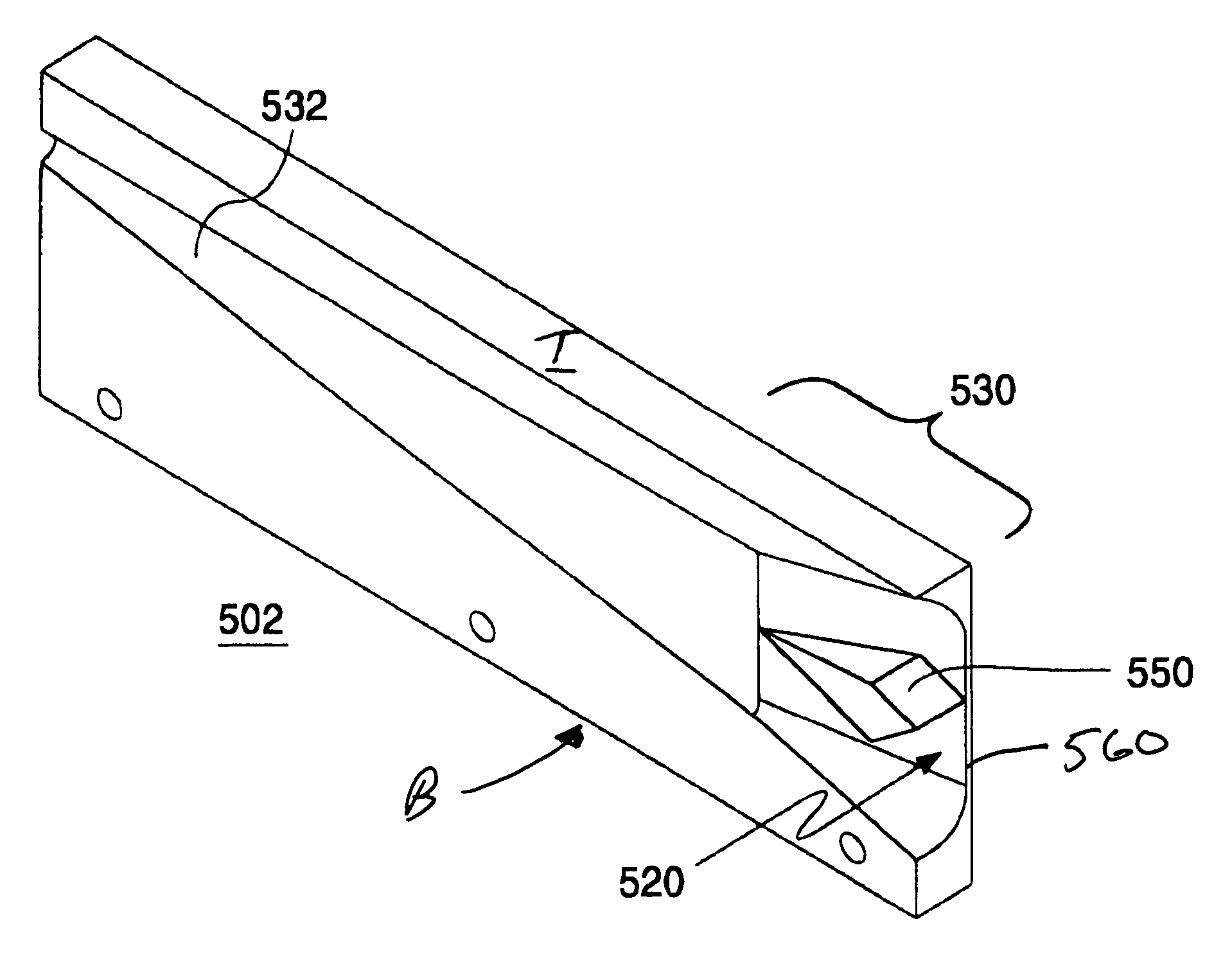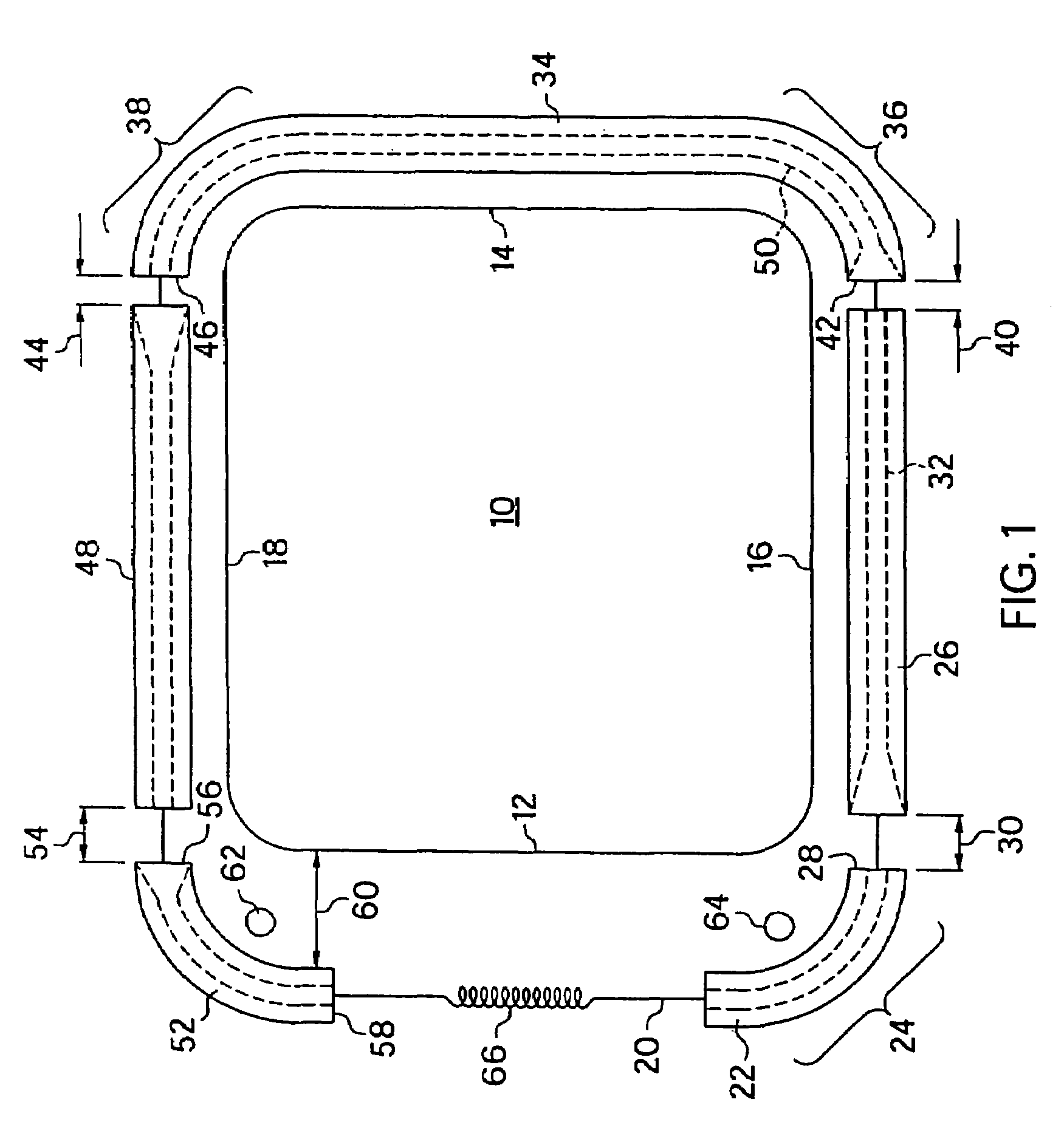Wide aperture wire tracking with partition
a wire tracking and wide aperture technology, applied in the direction of paper/cardboard containers, instruments, printers, etc., can solve the problems of misalignment of abutting plates, wires that cannot follow the track, and cannot be properly positioned around bales, etc., to achieve wider tolerances, reduce repair requirements, and widen tolerances
- Summary
- Abstract
- Description
- Claims
- Application Information
AI Technical Summary
Benefits of technology
Problems solved by technology
Method used
Image
Examples
Embodiment Construction
[0031]Referring to the accompanying drawings in which like reference numbers indicate like elements, FIG. 1 is a cross section of a cotton bale under compression, 10 surrounded by a guide track. The cotton bale will have a vertical first side, 12, a vertical opposite side, 14, a bottom side, 16, and a top side, 18. The baling wire, 20, is deployed by the automatic baling machine along a path beginning with wire feeder drive (not depicted) first in a downward direction parallel to the first vertical bale side, 12. The wire path is guided by the wire guide track. The wire feed drive propels the wire through a first fixed section of the wire guide track, 22, which redirects the wire progression through curve, 24, to a horizontal path parallel to the bottom of the cotton bale 16. A second straight section of the wire guide track, 26, parallels the bottom of the cotton bale 16. In the preferred embodiment this second section of the wire guide track is positioned within a channel under a ...
PUM
 Login to View More
Login to View More Abstract
Description
Claims
Application Information
 Login to View More
Login to View More - R&D
- Intellectual Property
- Life Sciences
- Materials
- Tech Scout
- Unparalleled Data Quality
- Higher Quality Content
- 60% Fewer Hallucinations
Browse by: Latest US Patents, China's latest patents, Technical Efficacy Thesaurus, Application Domain, Technology Topic, Popular Technical Reports.
© 2025 PatSnap. All rights reserved.Legal|Privacy policy|Modern Slavery Act Transparency Statement|Sitemap|About US| Contact US: help@patsnap.com



